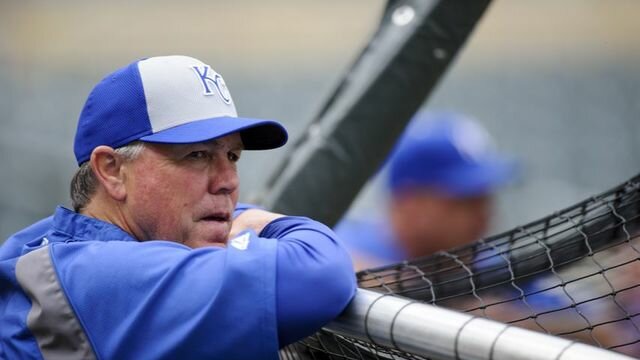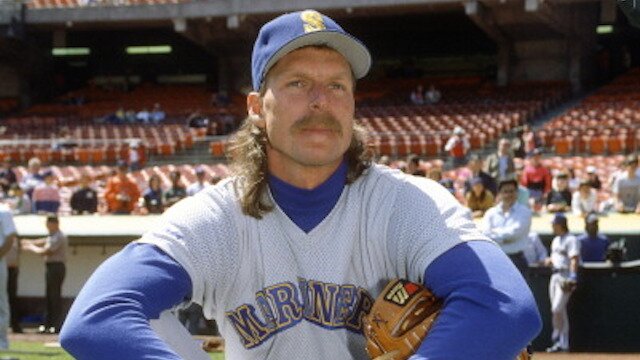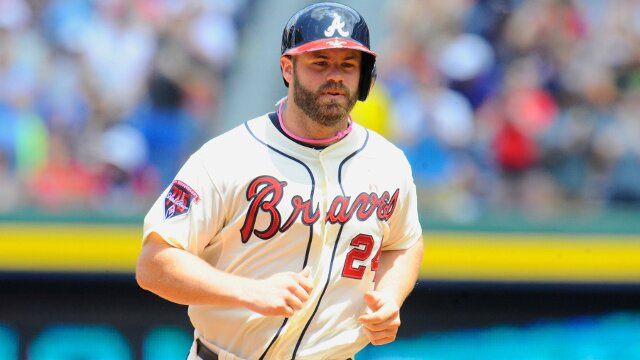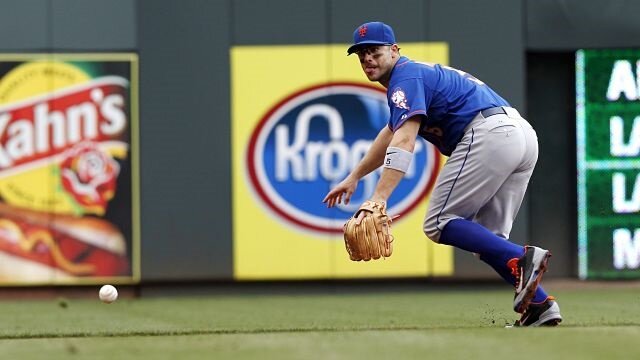Randy Johnson’s HOF Journey Is No Tall Tale
It wasn’t unanimous, but it was close. Randy Johnson was enshrined in Cooperstown earlier this week on his first ballot with the eighth highest percentage of votes for an inductee in the history of the process. The Big Unit grabbed 97.3 per cent of the BBWAA votes, leaving Pedro Martinez, John Smoltz and Craig Biggio well in his rearview.
Born Randall David Johnson in Walnut Creek, CA in 1963, the mangy-mullet sporting Johnson was perhaps mistaken by a lot of scouts to be a basketball player instead of a baseball one. He was overlooked in the first round of the 1985 MLB amateur draft, before the Montreal Expos selected him 36th overall. Even before that, the Atlanta Braves drafted him in the fourth round of 1982 before Johnson elected to play for the USC Trojans.
Only a single Hall of Famer was selected before him in that ’85 draft — shortstop Barry Larkin. Johnson wasn’t even the Expos’ first choice.
Being ahead in the count came easily to Johnson, however. The 6-foot-10 southpaw was blessed with an incredible physique custom made to be one of the most dominant pitchers the game has ever seen. His ferocity and ability to intimidate hitters was a daily detriment to Johnson’s opponents during the entirety of his playing career. Of the 215 players to reach the Baseball Hall of Fame, Johnson resides as the tallest.
However, there were a few others worthy of consideration. Barry Bonds was taken sixth overall and Rafael Palmeiro selected 22nd, but their fates will be determined by the misfortunes of the steroid era. As for Johnson, someone of his stature, who was 225 pounds at the height of his career, would never be associated with PED use. He was naturally special, and especially natural.
Amongst the greatest of the greats to pitch in this beloved game, Big Unit ranks in the top 10 for WAR, strikeouts and K/9 — the latter of which he is the all-time career leader at with a measure of 10.6. He also may be the last pitcher ever to reach the 300 wins milestone in a lifetime.
Now the question looms of whether Johnson will be remembered as a patron of the Seattle Mariners or Arizona Diamondbacks in upstate New York. Though he won his only World Series title in 2001 as a D-back, greatness became him in Seattle, where he blossomed and won his first of five Cy Young awards in 1995. He also played 10 seasons with the M’s and accumulated 130 wins in the Pacific Northwest, compared to an interrupted eight years in the desert where he won 118 contests.
The argument could be made for either, and though Johnson will be consulted, the Hall will adjudicate a final say.
There was not much surreal about Johnson’s career. All the accomplishments are impressive, but few would stand out as surreal if you physically witnessed him pitch on a given day. Johnson and Martinez were two of the most dominant pitchers of their generation — all that separated them was approximately the length of a ruler.
If one looks hard at his legacy, perhaps the most startling statistic in Johnson’s career is the one that came at the age of 40. Before pitching a no-hitter in 1990 with the Mariners, he obtained perfection as a high school senior in 1982, his final grade school start. More than two decades after the fact — in 2004 as a Diamondback — Johnson threw a perfect game against the same Braves organization that missed out on owning his rights some 22 years prior.
He was over the hill by most standards then, but still managed to finish a close second in Cy Young award voting that year behind Roger Clemens‘ likely steroid aided campaign.
The man himself is much taller than his path to baseball immortality would insinuate. Johnson probably won’t admit to anyone that baseball was easy for him once he overcame early command issues. At the same time, few of his opponents will tell you that facing him in the batters box was not a daunting task. He played until he was 45, and his left arm was built for hurling a ball towards home plate.
The Hall of Fame is a fitting resting place for a a limb that exemplified peak survival of the fittest during its playing days.
Jordan Wevers is an MLB writer for www.RantSports.com. Follow him on Twitter @JordanWevers, “Like” him on Facebook, or add him to your network on Google.
Jung-Ho Kang Will Not Outplay Jordy Mercer
The Pittsburgh Pirates were able to sign Korean star Jung-Ho Kang, but despite Kang's comments, he will not outplay Jordy Mercer. Read More
Rizzo Adds to Cubs Hype With NL Central Prediction
Chicago Cubs first baseman Anthony Rizzo caused a stir in Chicago on Thursday with his assertion that the Cubs will win the NL Central in 2015. Read More
San Diego Perfect Pick for 2016 MLB All-Star Game
Major League Baseball announced Thursday that Petco Park, home of the San Diego Padres, has been chosen as the host of the 2016 MLB All-Star Game. Read More
Braves' Trade Of Gattis Was The Right Move
The Atlanta Braves traded Evan Gattis to the Houston Astros, making a tough, but correct decision in dealing away the fan favorite. Read More
Tim Lincecum Will Be Dominant In Giants' Bullpen
Tim Lincecum is projected to begin the 2015 MLB season as part of the San Francisco Giants' starting rotation, but he could prove to be a lethal force out of the bullpen. Read More
Mets Need a Healthy David Wright To Be Contenders
Looking to compete, the New York Mets need David Wright to be healthy in 2015 for those dreams to become reality. Read More
A's Zobrist Still One Of MLB's Best-Kept Secrets
Ben Zobrist is still one of the best-kept secrets in all of baseball, and a perfect fit for the Oakland A's. Read More
Phillies' Cole Hamels Not Worth Trading For
Despite having been a great contributor to the Philadelphia Phillies over the past few years, Cole Hamels is not worth trading for, and here is why. Read More
Ian Desmond Could Be Missing Piece For Mets
Ian Desmond, who has been rumored to be a potential target for the New York Mets, could be the missing piece to becoming contenders. Read More
15 Worst Signings of 2014-15 MLB Offseason So Far
Pro baseball has no salary cap, so things can get interesting in free agency. Click here to see where money was not-so-wisely spent thus far this offseason. Read More
5 Players Dodgers Need To Trade For By Opening Day
The Dodgers have made a lot of moves so far this offseason, but here are five more they need to make to be serious World Series contenders. Read More
5 Boston Red Sox That Could Still Be Traded
As they look to turn things around after a bad 2014 season, here are five players the Boston Red Sox should be looking to trade before Opening Day. Read More









 @JordanWevers
@JordanWevers 








